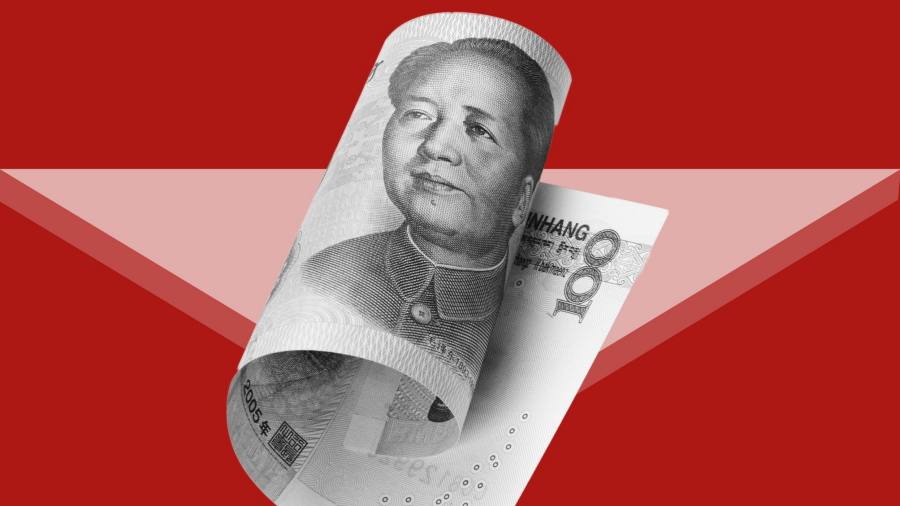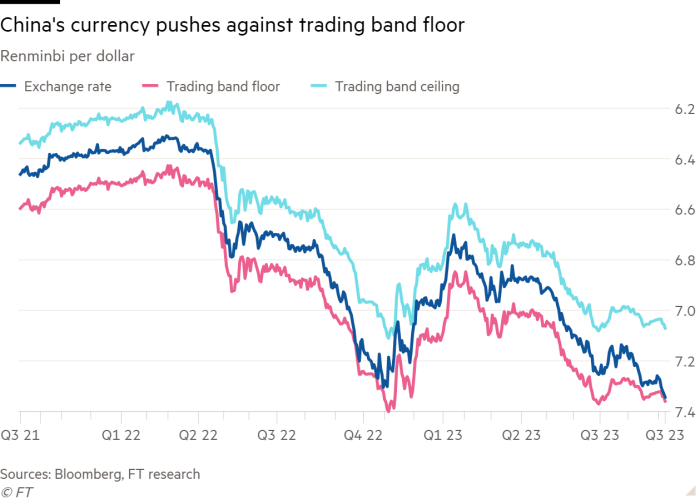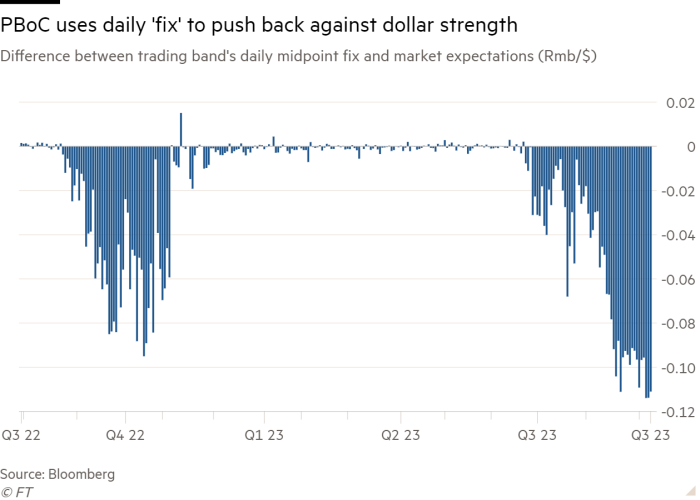
Receive free Renminbi updates
We’ll send you a myFT Daily Digest email rounding up the latest Renminbi news every morning.
China’s central bank has set the trading band for the renminbi against the dollar at an unexpectedly high level, extending its efforts to fend off bets against the currency as it plumbs lows not seen since the 2007-08 financial crisis.
Foreign exchange strategists and economists said the move reflected growing discomfort with renminbi weakness among senior officials, who welcome the boost to exports afforded by a softer currency but remain wary of capital outflows that could be stoked by runaway depreciation against a strengthening dollar.
Despite the move from the People’s Bank of China, the renminbi fell 0.2 per cent in early trading on Friday to Rmb7.3417 a dollar, taking the currency down about 6 per cent this year to a new 16-year low.

Monetary easing to boost the economy has pushed down interest rates on Chinese government bonds relative to those on US Treasuries and has already prompted more than $20bn in foreign outflows from the country’s onshore debt market this year. That has added downward pressure to the exchange rate.
“This is a very dynamic dance,” said Hui Shan, chief China economist at Goldman Sachs. Since sluggish economic growth meant there was no option to raise interest rates to match those in the US, the central bank was primarily aiming to manage the currency’s fall, she said. “Most investors still expect [the renminbi] will continue to depreciate.”
Recent efforts by the PBoC to prop up the renminbi have focused on its daily fixing of the currency trading band’s midpoint, around which the renminbi can trade 2 per cent in either direction against the dollar. On Friday, the PBoC set the fix at Rmb7.215 a dollar, about Rmb0.11 stronger than a consensus forecast from analysts surveyed by Bloomberg.

The stronger than expected fix came after data on Thursday showed a fourth straight month of export contraction and pushed the currency below its nadir of last October, when cities across the country were forced to lock down to contain outbreaks of Covid-19.
“You can see why the renminbi is plumbing new lows because the dollar is strong across the board and the PBoC’s options [to support the renminbi] remain limited,” said Mansoor Mohi-uddin, chief economist at Bank of Singapore.
“The central bank will continue to try and use the fix to prevent a more debilitating slide in the exchange rate, which would worsen sentiment towards China and lead to more capital outflows and further falls,” he added. “They don’t want to get into that vicious circle.”
But the PBoC is still under pressure to crank up stimulus and boost growth. The next major economic reading will come on Saturday from the official consumer price index for August, which economists polled by Reuters have forecast to rise just 0.2 per cent from a year ago.
Foreign exchange strategists said unless Beijing launched major fiscal stimulus or a rally for the dollar began to fade, there was little chance of a turnaround for China’s currency.
“Now that we’re through those low levels from last year there seems to be more to go, and the key is that the perception outside of China is that Chinese investors are looking for the exits,” said Sean Callow, senior currency strategist at Westpac.
He said the bank was “recommending going short [against the renminbi] now, and while a big part of that is dollar strength, there is also really very little evidence of change in sentiment towards the renminbi in markets”.

